Quite often in the world of television games, there are set standards that will always ring true. Licensed games (based on movies, TV shows, toy lines, etc) will almost always be unplayably bad. Japanese RPGs will require hours and hours of level grinding. Madden 20XX will sell like hotcakes. Japanese and western developers will have exactly the opposite ideas of how games should be. And that last one is the important one here, because recently I’ve noticed that two completely different game series have evolved in almost the exact same pattern, and not only is one American-born and the other of Japanese heritage, but they’re of nearly opposite genres as well and come almost exclusively on different platforms.
Our first series is the “illustrious” MegaMan Battle Network. A stiflingly brilliant mash up of action and RPG, the Battle Network series was the first standout RPG series on the GameBoy Advance. It reinvented MegaMan and his world, and even cut him down to co-star, forced to share the spotlight with a rather vanilla human hero. Then we have Guitar Hero, which blew up the music game genre, and made the world embrace the art of playing a pretend guitar. Both series have come a long way, and coincidentally have shared many of the same steps along their separate paths.
MegaMan Battle Network took the idea of making MegaMan into a portable-friendly RPG, and then twisted it to make it feel like the action games that the plucky blue robot was known for. The world was re-imagined as a place where anything and everything was connected to the internet and the titular hero was but a program that answered to the back and call of the other main character, Lan Hikari. While Lan would run about around the world talking to ridiculous caricatures and completing tedious fetch quests, MegaMan’s portions were puzzle solving and virus busting. The gameplay made great use of MegaMan’s penchant for acquiring a wide array of secondary weapons, which were represented by battle chips that you could carry 20 of with you at any time. These were weapons that came in a nearly infinite variety, from shotguns to gigantic wooden spikes to flamethrowers to time bombs. They made the Mega Buster look absolutely useless in comparison, and gave the game a great deal of depth. You could battle in as many ways as you could come up with. Maybe you only wanted to use sword weapons. Maybe you’d rely mostly on using Navi chips, which summoned powerful allies to deal huge damage. Maybe you’d build a chip deck that took advantage of a special element. It was absolutely the most original MegaMan game made in years, despite the fact that there were a lot of recycled ideas from the MegaMan “continuity.”
Guitar Hero, on the other hand, was one of the PS2’s last breakout hits, and more than likely it’s best selling specialty controller game. The music genre was more or less just DDR in North America at that point, with very few music games escaping Japan, and even fewer that you’d actually hear about. But Guitar Hero was a game tailor-made for American gamers and music lovers. It took our most beloved instrument, turned it into a plastic toy, and made it so much more accessible than the real deal. The game featured 30 songs that ranged from legendary rockers to upstart Gen-Y groups, and then 17 more by bands that you’d never heard of. They were all covers, and 30 doesn’t really seem like a lot these days (the latest ones are pushing 100 on-disc tracks), but God damn the spirit of rock ‘n’ roll was alive here. You had songs by Queen, Boston, Judas Priest, Megadeth, Jimi Hendrix and the Ramones. It was challenging to learn too, but ultimately extremely satisfying to finally pull off incredible feats like a five-star performance on “Cowboys From Hell.” Guitar Hero was definitely a sleeper hit, as finding a copy of the game and guitar set within the first few months of the game’s release was like trying to find a Sasquatch; maybe you thought you saw one once, but really it was just a display box set there to fake you out.
Both games were exceptional, standout titles that represented their respective genres wonderfully. Battle Network gave people something truly entertaining to play on their GBAs besides the Mario Bros. pack-in that came with Super Mario Advance. Guitar Hero showed people that playing games for the fun of rocking out and getting high scores was just as (if not way more) fun as mindlessly running people over all day in GTA: Whatever City. And both games had their faults too. MMBN was a Japanese RPG, meaning that it would be chock full of tedious running around, and its plot was sufficiently goofy. Worming your way around the it-all-looks-the-same internet was annoying and most of the puzzles were either stupid or totally opaque. Guitar Hero couldn’t be played on a HDTV because it features no lag calibration, and even that tiny bit of lag can totally ruin the flow of a game built around the precision of the player’s input. Said input was a little unrefined too, with hammer-ons and pull-offs (HOPOs) being very difficult to execute reliably, and a rather lackluster multiplayer option. Also, Franz Ferdinand. Blech.
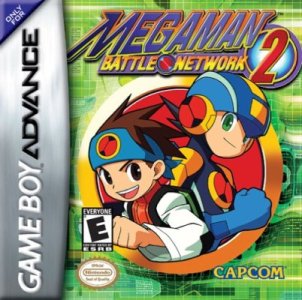
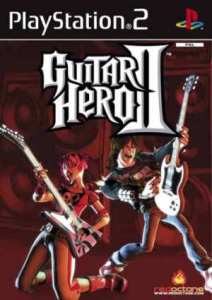
Capcom (who develop the MegaMan games, for those out of the loop) has a well known tradition of always making the second game in each series the absolute pinnacle. This was no different with MegaMan Battle Network 2. It was essentially the same game, but beefed up to be so much more awesome. New character customization options, nearly twice as many battle chips, a slightly less stupid plot, and even cooler boss enemies. Little did I know that Guitar Hero 2 would follow this exact same trend; bigger (and somehow even better) setlist, more unlockables, improved HOPOs, and a practice mode. Both games even got a multiplayer upgrade; GH2 now lets players play the entire song in face-off and includes a co-operative mode, while MMBN2 got a two-player net battle mode added onto the original’s somewhat pitiful trading-only multiplayer option. It should be known that the second installment in both series remains my favourite.
The third Battle Network game was equally as good as the second, much like in the original MegaMan series, but something was off. There were more chips and bosses and post-game content than ever, but the magic was starting to fade. It was starting to get the feeling of the same thing over and over again. It felt like Capcom was just going through the motions. And maybe there was even too much. The Navi customizer easily gave you the ability to tweak your playing style even more, but it also introduced a whole new set of baubles to roam around searching for. It even pushed the multiplayer envelope even farther by releasing two slightly different versions of the game, each with a few exclusive elements that made you get together with a friend to trade for.
Guitar Hero 3 upped the multiplayer ante too, but in a much more legitimate way, by including the option of online play. It was easily the best feature of the game, as the series had shifted developers, and its new handlers, Neversoft (the Tony Hawk’s Pro Skater guys) tried way too hard to take Guitar Hero and make it more extreme. They put in cutscenes and changed the HUD and spoiled the selection of unlockable tracks and gave Judy Nails a very unmistakable boob job. Also they cut Pandora, my favourite character. The main set list was still of a fairly solid selection, but the rest of the package was getting to be too much. The obnoxious and loud presentation wasn’t anywhere near as lovable as the notebook-and-doodles aesthetic of the previous entries in the series. Neversoft was taking Guitar Hero way too seriously, and while the core experience -playing great rock tunes with a plastic guitar- was as good as ever, it was starting to smell of the same been-there-done-that odor that had settled upon Battle Network 3. And it was way too hard, to boot. “Raining Blood” makes this game sooooo much less fun.

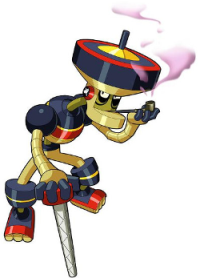 In both cases, where the fourth game in the series is concerned, the less said, the better. At this point in both series lifespans, the developers had openly admitted to wanting to milk their respective series for as much cash as they could while the games were at the peaks of their popularity. Battle Network 4 was a disaster. Not only was the main plot device a lame battle tournament, but you had to complete the asinine story three times to get everything. Each time you would play on the next difficulty, and unlock a new rank of chips and gear each time. It was awful, and I don’t believe I cared enough to make it through my second run, even though I’d stuck with both BN2 and 3 all the way to 100% completions. You don’t even get to see all the boss enemies until you’ve played through all three time. But that’s not so awful as it could be, because the bosses were starting to seem less like souped-up versions of classic MegaMan enemies, and more like big goofballs. The only nice thing I have to say is that at least here they gave the two versions very distinct differences, with a completely different set of bosses and transformations for MegaMan. It would have made playing both versions worthwhile if the game hadn’t been completely broken. And speaking of broken, I’m not even going to get into that whole Dark Chip mess.
In both cases, where the fourth game in the series is concerned, the less said, the better. At this point in both series lifespans, the developers had openly admitted to wanting to milk their respective series for as much cash as they could while the games were at the peaks of their popularity. Battle Network 4 was a disaster. Not only was the main plot device a lame battle tournament, but you had to complete the asinine story three times to get everything. Each time you would play on the next difficulty, and unlock a new rank of chips and gear each time. It was awful, and I don’t believe I cared enough to make it through my second run, even though I’d stuck with both BN2 and 3 all the way to 100% completions. You don’t even get to see all the boss enemies until you’ve played through all three time. But that’s not so awful as it could be, because the bosses were starting to seem less like souped-up versions of classic MegaMan enemies, and more like big goofballs. The only nice thing I have to say is that at least here they gave the two versions very distinct differences, with a completely different set of bosses and transformations for MegaMan. It would have made playing both versions worthwhile if the game hadn’t been completely broken. And speaking of broken, I’m not even going to get into that whole Dark Chip mess.
Guitar Hero: World Tour was also a horrible abortion of a game, and hopefully remain the black sheep of the family forever. I dread the idea of a worse Guitar Hero game. Oh, no wait, that was Band Hero. But that’s not the point. World Tour was Neversoft’s attempt at competing with the stellar Rock Band. Adding vocals and drums wouldn’t have been so bad, but that was the point where the directors said that people weren’t crazy enough about Guitar Hero and figured they should branch out with the kinds of music they’d put in the game. What resulted was a overall tepid and unexciting set list that left me wishing I hadn’t wasted $60 bucks on it. Seriously, there are like six good songs in the game. And I know the selection was less than perfect in GH3, but cutting out the unlockable songs altogether? Criminals! Unlocking those tracks (as arbitrary a content block as it might have been) was always special, and that feeling was completely void in this game. The upside is that I kind of like the slider parts, as it makes sequences that I’m nowhere near good enough to play possible. And what’s the deal with making me play a whole set at a time? I never liked that part of Rock Band and I surely don’t like it here. I like to have the option, but I don’t want it forced on me.
Both Battle Network 5 and Guitar Hero 5 seemed to bring redemption to their respective franchises, at least that’s what all the pre-release media led us to believe. To say they restored their families’ good names would be a bit much, but they were certainly a step back in the right direction. Guitar Hero 5 accomplished this mainly by making a much better set list. Not only does it contain “Under Pressure” (goes up a whole letter grade for that alone), but it has two Tom Petty songs and Megadeth is back! Plus Rush! How could I be mad at a game that includes Rush? The ability to play with any combination of instruments is a monumental improvement too. The guy who gets stuck on drums is always disappointed, and eight times out of ten, people will choose not to play over having to sing, so allowing everyone to play guitar together makes the game so much more party-friendly. Speaking of which, there’s all those party modes in there too, but as someone who mostly plays solo, I really haven’t tried any of them, and I doubt they would enhance my multiplayer experience (I prefer to play co-op). And switching up the gameplay by using challenges to unlock extra content is nice, but it also kind of sucks for those of us that don’t own a drum kit and are exempt from certain challenges. It’s still saddled with some truly awful tunes (Coldplay again? Fuck guys, learn! Coldplay sucks!), and it doesn’t quite have that true Guitar Hero feel yet, but I’m much less ashamed to own this than World Tour.
Battle Network 5 on the other hand, changes things up by *SHOCK!* changing the gameplay itself. 80% of the game is still traditional Battle Network fare, alternating between running around as Lan and blasting viruses as MegaMan, but then there’s a new twist. Not only can MegaMan assume the style and powers of his ally NetNavis, but you can actually play as them in certain parts of the game! Also, there’s a cool new strategy-style game mode that shakes things up a bit. It’s a little jarring to have something so different in a game franchise that prides itself on being the same thing over and over again with minimal changes, but it’s actually a pretty sweet sub-game. It actually requires quite a bit of planning and strategy, and the later instances can get incredibly hard, though it never feels like an unfair fight. They also dropped the lame “play it three times!” schtick, which in itself is a major improvement. The overarching plot is actually kind of good too, even if it has the usual MegaMan stupidness and plot holes mixed in. The ally characters aren’t really the coolest ones they could have chosen, but it’s nice to see some fresh faces in Mega’s place. And this one takes the version split even farther, developing two parallel but very different stories.
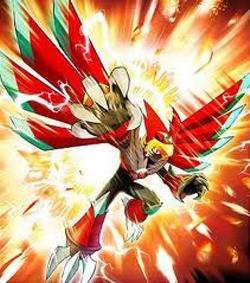 Battle Network 6 scaled itself back down a bit in terms of ambition and diversity, but it was the closest the series has come to trumping BN2. The version split isn’t quite as huge as in the last two games, but each still contains a unique set of ally characters. And MegaMan’s transformation powers have been tweaked to be so much greater than ever, giving him his allies’ forms without time limits, a super-powerful standard Beast transformation, and nearly unstoppable Beast versions of each of the other forms. While BN6 drops the strategy sub-game, it allows you to play as the ally characters much more freely and all but removes the horrible, game-breaking Dark Chips. The story ends here, officially putting the series to bed, and I honestly was happy that it ended on such a good note. Had Battle Network 4 been the last one, it would have left a bad taste in my mouth that might have fouled my love for the older games in the series. But things got much better from there on in, and while 4 is best avoided and 5 is skippable, Battle Network 6 is definitely a chapter in the series that fans will enjoy. I know I was very pleased that I enjoyed the game to stick with it long enough to almost hit %100 completion again. I let a few of the higher-class chips go, but I essentially saw all that the game had to offer, and that’s way more than I got from 4 and 5.
Battle Network 6 scaled itself back down a bit in terms of ambition and diversity, but it was the closest the series has come to trumping BN2. The version split isn’t quite as huge as in the last two games, but each still contains a unique set of ally characters. And MegaMan’s transformation powers have been tweaked to be so much greater than ever, giving him his allies’ forms without time limits, a super-powerful standard Beast transformation, and nearly unstoppable Beast versions of each of the other forms. While BN6 drops the strategy sub-game, it allows you to play as the ally characters much more freely and all but removes the horrible, game-breaking Dark Chips. The story ends here, officially putting the series to bed, and I honestly was happy that it ended on such a good note. Had Battle Network 4 been the last one, it would have left a bad taste in my mouth that might have fouled my love for the older games in the series. But things got much better from there on in, and while 4 is best avoided and 5 is skippable, Battle Network 6 is definitely a chapter in the series that fans will enjoy. I know I was very pleased that I enjoyed the game to stick with it long enough to almost hit %100 completion again. I let a few of the higher-class chips go, but I essentially saw all that the game had to offer, and that’s way more than I got from 4 and 5.
Guitar Hero: Warriors of Rock is still about a month away from release, but eveyrthing that has been said about it to this point shows that Neversoft is finally going back to what made Guitar Hero so great in the first place. The track list is looking to be about 90% metal and rock ‘n’ roll, with the other 10% made up of punk and alternative music. This is great. They finally understand that we play Guitar Hero because we love guitar songs, not just to play popular music. Rush is basically the face band for the game, and if I was ecstatic that GH5 had one Rush song in it, imagine how I felt when Neversoft announced that the entire “2112” suite will be in Warriors of Rock. The fact that Dave Mustaine and Gene Simmons are both involved in the game also boosts its rock credibility quite a bit. Say what you want about how refined Rock Band is getting, but it most certainly lacks the star power that Guitar Hero boasts. I like that the “quest mode” is focused on completing challenges again, but I hope this time they level the playing field for the rest of us and allow all content to be unlocked by one person on guitar. I don’t want to be exempt from parts of my game because I don’t know three other people who play at Expert level. Still, it looks like it’s going to be a fantastic game, and I have a good feeling that it’s going to bring back that love I felt for the Guitar Hero franchise way back in GH2.
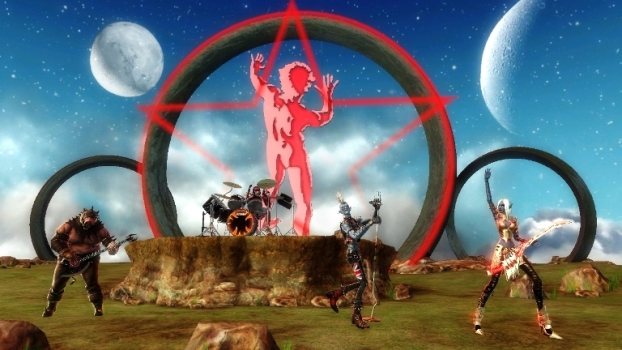
While the MegaMan Battle Network series is technically dead (the MegaMan Star Force games were flashy sequels masquerading as a new series), Guitar Hero lives on, but is going to be developed by a new team after Warriors of Rock, so who knows what’s in store for it. But if you look at the parallels between the two, we can see that the next Guitar Hero will parade around under a flimsy mask pretending it’s a new series, when it’s really just a sequel with fancier graphics and less interesting gameplay. After that it will spawn two sequels and then Activision will finally realize than nobody really cares about it anymore and then remake the first game with some extra content culled from the “new series” but nobody will care because they’re content to play GH2 and Warriors of Rock until the end of time. It’s a bold prediction, but look at the signs, man!
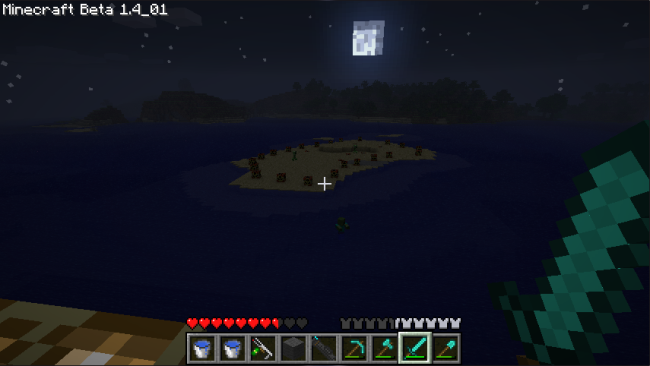
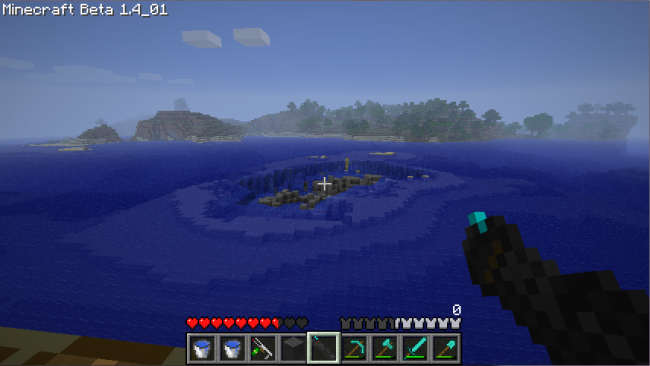






 In both cases, where the fourth game in the series is concerned, the less said, the better. At this point in both series lifespans, the developers had openly admitted to wanting to milk their respective series for as much cash as they could while the games were at the peaks of their popularity. Battle Network 4 was a disaster. Not only was the main plot device a lame battle tournament, but you had to complete the asinine story three times to get everything. Each time you would play on the next difficulty, and unlock a new rank of chips and gear each time. It was awful, and I don’t believe I cared enough to make it through my second run, even though I’d stuck with both BN2 and 3 all the way to 100% completions. You don’t even get to see all the boss enemies until you’ve played through all three time. But that’s not so awful as it could be, because the bosses were starting to seem less like souped-up versions of classic MegaMan enemies, and more like big goofballs. The only nice thing I have to say is that at least here they gave the two versions very distinct differences, with a completely different set of bosses and transformations for MegaMan. It would have made playing both versions worthwhile if the game hadn’t been completely broken. And speaking of broken, I’m not even going to get into that whole Dark Chip mess.
In both cases, where the fourth game in the series is concerned, the less said, the better. At this point in both series lifespans, the developers had openly admitted to wanting to milk their respective series for as much cash as they could while the games were at the peaks of their popularity. Battle Network 4 was a disaster. Not only was the main plot device a lame battle tournament, but you had to complete the asinine story three times to get everything. Each time you would play on the next difficulty, and unlock a new rank of chips and gear each time. It was awful, and I don’t believe I cared enough to make it through my second run, even though I’d stuck with both BN2 and 3 all the way to 100% completions. You don’t even get to see all the boss enemies until you’ve played through all three time. But that’s not so awful as it could be, because the bosses were starting to seem less like souped-up versions of classic MegaMan enemies, and more like big goofballs. The only nice thing I have to say is that at least here they gave the two versions very distinct differences, with a completely different set of bosses and transformations for MegaMan. It would have made playing both versions worthwhile if the game hadn’t been completely broken. And speaking of broken, I’m not even going to get into that whole Dark Chip mess. Battle Network 6 scaled itself back down a bit in terms of ambition and diversity, but it was the closest the series has come to trumping BN2. The version split isn’t quite as huge as in the last two games, but each still contains a unique set of ally characters. And MegaMan’s transformation powers have been tweaked to be so much greater than ever, giving him his allies’ forms without time limits, a super-powerful standard Beast transformation, and nearly unstoppable Beast versions of each of the other forms. While BN6 drops the strategy sub-game, it allows you to play as the ally characters much more freely and all but removes the horrible, game-breaking Dark Chips. The story ends here, officially putting the series to bed, and I honestly was happy that it ended on such a good note. Had Battle Network 4 been the last one, it would have left a bad taste in my mouth that might have fouled my love for the older games in the series. But things got much better from there on in, and while 4 is best avoided and 5 is skippable, Battle Network 6 is definitely a chapter in the series that fans will enjoy. I know I was very pleased that I enjoyed the game to stick with it long enough to almost hit %100 completion again. I let a few of the higher-class chips go, but I essentially saw all that the game had to offer, and that’s way more than I got from 4 and 5.
Battle Network 6 scaled itself back down a bit in terms of ambition and diversity, but it was the closest the series has come to trumping BN2. The version split isn’t quite as huge as in the last two games, but each still contains a unique set of ally characters. And MegaMan’s transformation powers have been tweaked to be so much greater than ever, giving him his allies’ forms without time limits, a super-powerful standard Beast transformation, and nearly unstoppable Beast versions of each of the other forms. While BN6 drops the strategy sub-game, it allows you to play as the ally characters much more freely and all but removes the horrible, game-breaking Dark Chips. The story ends here, officially putting the series to bed, and I honestly was happy that it ended on such a good note. Had Battle Network 4 been the last one, it would have left a bad taste in my mouth that might have fouled my love for the older games in the series. But things got much better from there on in, and while 4 is best avoided and 5 is skippable, Battle Network 6 is definitely a chapter in the series that fans will enjoy. I know I was very pleased that I enjoyed the game to stick with it long enough to almost hit %100 completion again. I let a few of the higher-class chips go, but I essentially saw all that the game had to offer, and that’s way more than I got from 4 and 5.
